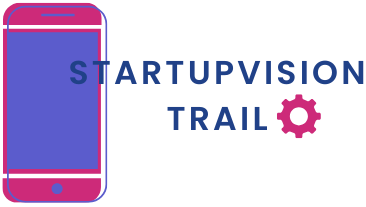Table of Contents
ToggleIn today’s digital landscape, Software as a Service (SaaS) has transformed how businesses operate. While the convenience and scalability of SaaS solutions are undeniable, they also introduce a unique set of risks that organizations must navigate. From data breaches to compliance issues, understanding these risks is crucial for maintaining security and trust.
Effective SaaS risk management involves identifying potential vulnerabilities and implementing strategies to mitigate them. Companies must stay proactive, continually assessing their SaaS applications and the third-party vendors that support them. By prioritizing risk management, businesses can harness the power of SaaS while safeguarding their valuable data and ensuring compliance with industry regulations.
Overview of SaaS Risk Management
SaaS risk management involves identifying, assessing, and mitigating risks associated with Software as a Service applications. Organizations face various vulnerabilities, including data breaches, service outages, and compliance issues. Employing an effective management framework can help address these challenges.
Key components of SaaS risk management include:
- Risk Assessment: Organizations evaluate potential risks associated with SaaS applications. Understanding the threat landscape enables informed decision-making.
- Vendor Management: Continuous monitoring of SaaS vendors ensures they comply with security standards. Assessing third-party controls mitigates dependencies on unreliable vendors.
- Data Protection: Implementing encryption and access controls safeguards sensitive information. Protecting data both in transit and at rest reduces the risk of unauthorized access.
- Compliance Monitoring: Organizations must adhere to relevant regulations, such as GDPR or HIPAA. Regular audits help ensure compliance and avoid legal penalties.
- Incident Response Planning: Establishing a clear response plan for potential issues helps organizations react quickly. Preparedness minimizes damage during incidents such as data breaches.
- User Training: Conducting regular training sessions educates employees about security best practices. Engaging staff in awareness programs strengthens the overall security posture.
Incorporating these elements into a SaaS risk management strategy enhances an organization’s ability to navigate the complexities of cloud-based applications while safeguarding vital resources.
Identifying Risks in SaaS

Identifying risks in Software as a Service (SaaS) applications is critical for effective risk management. Organizations must recognize various categories of risks to safeguard their operations and resources.
Security Risks
Security risks include data breaches, unauthorized access, and vulnerabilities in the software. Organizations face threats from cyberattacks, including phishing, ransomware, and malware. Implementing strong authentication methods, encryption, and regular security assessments reduces these risks significantly. Companies also need to establish incident response plans that address potential breaches swiftly.
Compliance Risks
Compliance risks arise from failing to adhere to regulations such as GDPR, HIPAA, or CCPA. Non-compliance can lead to hefty fines and legal penalties. Organizations must evaluate how their SaaS providers manage data and ensure that data handling practices align with applicable regulations. Regular audits and compliance assessments help organizations maintain compliance and mitigate risks.
Operational Risks
Operational risks stem from disruptions in service, application downtime, or dependency on third-party vendors. Service outages can impact business operations and customer trust. To minimize these risks, organizations should assess vendor reliability, review service level agreements (SLAs), and develop contingency plans to handle potential disruptions. Regular monitoring of service performance can further enhance operational resilience.
Strategies for Effective SaaS Risk Management
Implementing effective SaaS risk management strategies significantly enhances an organization’s ability to manage potential threats. Key components include risk assessment frameworks and vendor management best practices.
Risk Assessment Frameworks
Utilizing structured risk assessment frameworks allows organizations to identify vulnerabilities within their SaaS applications. Common frameworks include:
- NIST Cybersecurity Framework: Focuses on identifying, protecting, detecting, responding, and recovering from incidents.
- ISO/IEC 27001: Provides a comprehensive approach to information security management, emphasizing continuous improvement.
- COBIT: Aligns IT objectives with business goals and encompasses risk assessment as part of governance.
Organizations should conduct regular risk assessments using these frameworks to ensure ongoing identification of new threats and vulnerabilities. The assessments should prioritize risks based on likelihood and impact, leading to tailored mitigation actions.
Vendor Management Best Practices
Adopting robust vendor management best practices fosters stronger security and compliance in SaaS relationships. Key practices include:
- Due Diligence: Before engaging with vendors, organizations should assess their security measures, compliance certifications, and performance history.
- Contract Clauses: Include clear data protection and incident response clauses in contracts to establish expectations and responsibilities.
- Continuous Monitoring: Implement ongoing monitoring of vendor security practices through audits and regular performance evaluations to ensure compliance with organizational standards.
These practices reduce the risks associated with third-party vendors and enhance overall SaaS security. Regular communication with vendors also plays a crucial role in maintaining a secure environment and swiftly addressing any emerging issues.
Tools and Technologies for SaaS Risk Management
Effective SaaS risk management relies on various tools and technologies that streamline processes, enhance security, and ensure compliance. The right solutions can significantly improve an organization’s risk posture.
Risk Management Software
Risk management software offers functionalities for identifying, assessing, and mitigating risks associated with SaaS applications. Solutions such as RiskWatch, RiskLens, and LogicGate provide comprehensive dashboards that allow organizations to visualize risks in real-time. These tools enable users to:
- Identify vulnerabilities: Conduct risk assessments to pinpoint weaknesses within SaaS applications.
- Track incidents: Monitor past breaches and security incidents to prevent future occurrences.
- Generate reports: Create detailed reports that outline identified risks and the status of mitigation efforts.
Integrating risk management software into an organization’s workflow enhances collaboration among team members and supports informed decision-making.
Automation for Compliance
Automation tools play a crucial role in ensuring regulatory compliance. Solutions like Compliance360, OneTrust, and Vanta automate tasks associated with monitoring and reporting compliance metrics for various regulations, such as GDPR and HIPAA. Key benefits of automation for compliance include:
- Streamlined auditing: Facilitate regular audits by automating data collection and reporting.
- Real-time monitoring: Continuously assess vendor compliance, triggering alerts for any deviations.
- Policy enforcement: Ensure adherence to compliance policies through automated controls and workflows.
Utilizing automation tools significantly reduces the risk of human error while maintaining up-to-date compliance documentation and processes.
SaaS risk management is crucial for any organization leveraging cloud-based applications. By proactively identifying and addressing potential risks, businesses can safeguard their data and ensure compliance with regulations. Implementing structured frameworks and utilizing effective tools streamlines the process of risk assessment and vendor management.
Organizations that prioritize continuous monitoring and employee training enhance their security posture and operational resilience. As the landscape of SaaS evolves, staying ahead of risks through diligent management will not only protect vital resources but also foster trust with customers and stakeholders. Embracing a comprehensive SaaS risk management strategy is essential for navigating today’s digital environment successfully.





